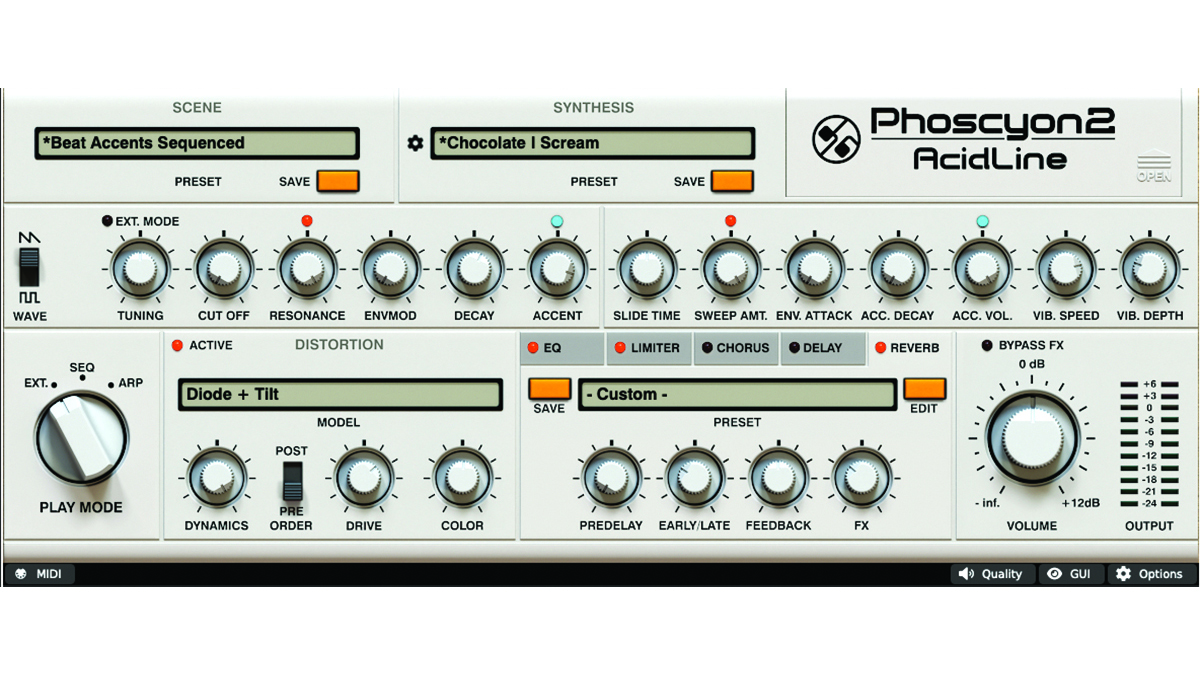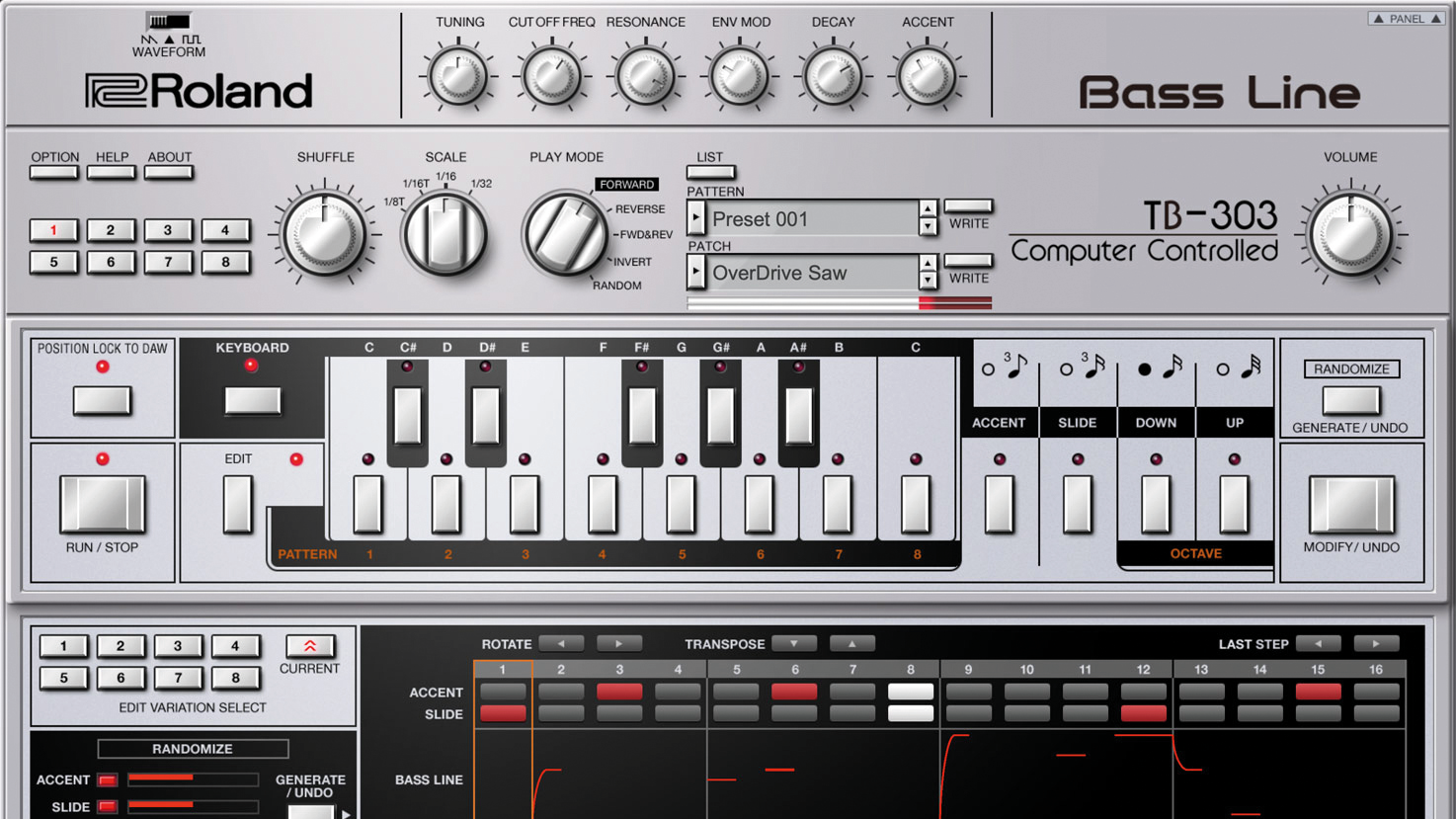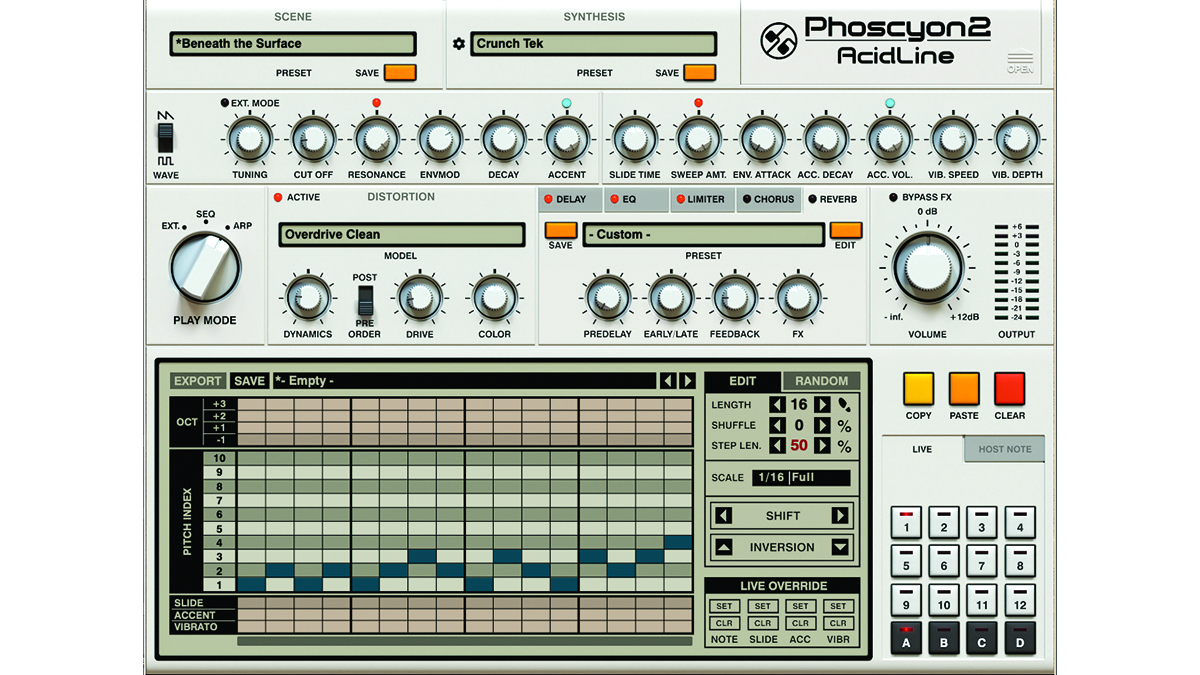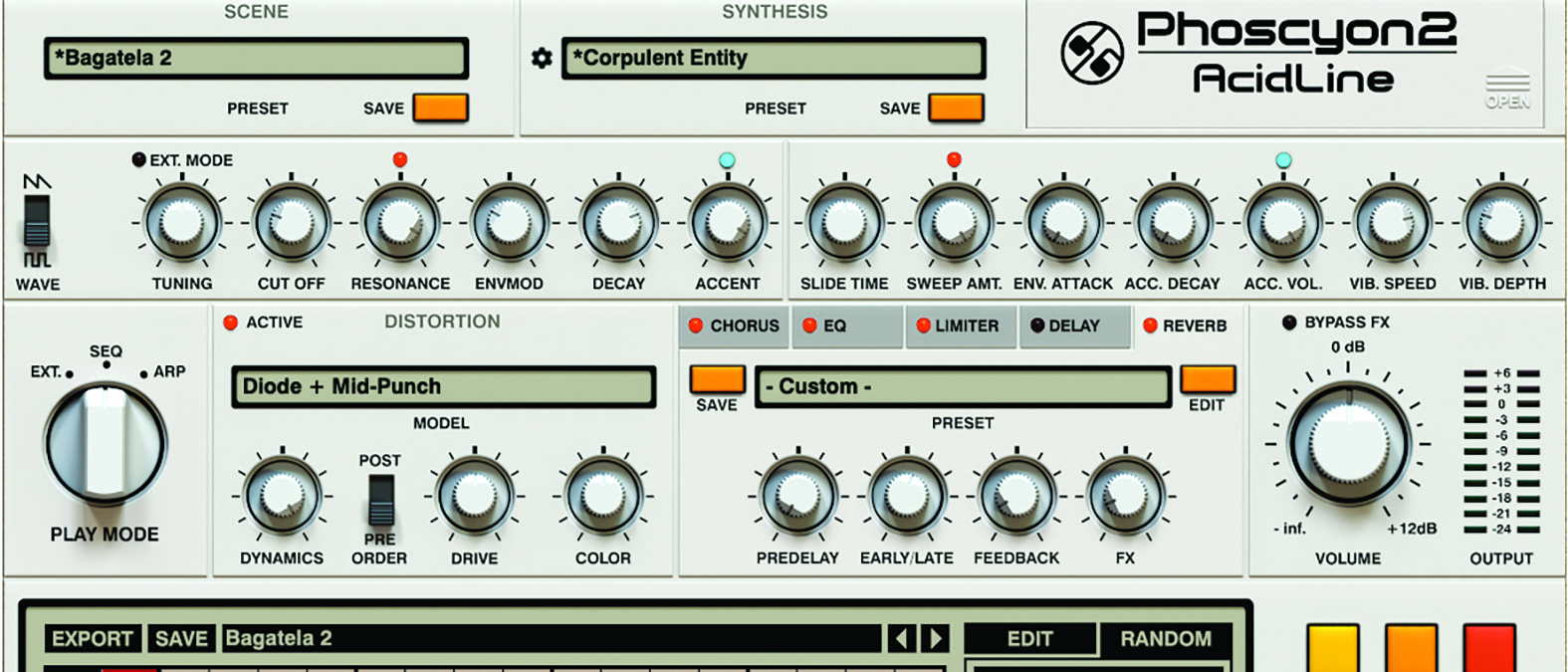MusicRadar Verdict
The 303 arena is bustling, but the Phoscyon 2 holds its head very high. A hugely pleasurable and rewarding plugin
Pros
- +
Excellent emulation.
- +
Brimming with inspirational content.
- +
Three play modes.
- +
Plenty of distortion colour.
Cons
- -
No stand-alone version.
- -
DAW sequencer has to be running to access sequencer playback.
MusicRadar's got your back
D16 Group Phoscyon 2: What is it?
Windows 7 or newer. CPU: 3.2 GHz SSE (Multicore 4.0 GHz recommended). RAM: 8 GB (16 GB Recommended). Software: VST2/VST3/AAX compatible host application (32-bit or 64-bit). Mac OS X 10.13 to macOS X 12. CPU: Intel based 2.8 GHz (i7 based 3.4 GHz recommended), Apple silicon. RAM: 8 GB (16 GB Recommended). Software: AU/VST2/VST3/AAX compatible host application (64-bit only). Buy at Plugin Boutique
As happy accidents go, the Roland TB-303 received a pretty lucky roll of the dice back in the ’90s, becoming the must-have device for numerous forms of house and dance music. Fast forward to today, its popularity remains undiminished, with used-unit prices extending beyond reach for most of us.
Consequentially, it’s the perfect device to emulate in software, and that’s not entirely because of the exorbitant price tag. The original 303 was always, essentially, a budget unit, and with those budgetary constraints came an interface that made sequencer programming something of a nightmare, while control of the synthesizer elements was relatively easy, but on the limited side.
D16 Group has examined the 303 with a laser focus, presenting software which not only sounds unbelievably reminiscent of an original but provides all of the additional elements that you could possibly need in order to go the full 303 mile.

D16 Group Phoscyon 2: Performance and verdict
Let’s begin with the sound engine itself; we have the traditional saw and square waves at the front end, with the usual pot-based controls for filter cutoff and resonance, envelope modulation and decay. There is also the accent pot, which ties in with the sequential element.
Apart from the obvious ability to change these controls in real-time with your computer’s cursor, each control may also be assigned a MIDI CC parameter, with a simple right-click of the mouse. If you have a bank of controller pots at your disposal, via your MIDI keyboard, you can line these up nicely to match the on-screen GUI.
The distortion section comes in for special praise… it’s a strange thing to say, but it’s actually very musical
In the first instance, Phoscyon 2 really does sound indistinguishable from an original 303. However, this is only part of the puzzle, as there is a large contingent of effects to bolster the sound. The distortion section comes in for special praise, with emulations of several devices, coupled with control of drive and colour. It’s a strange thing to say about distortion, but it’s actually very musical.

• Roland TB-303
An unsurprisingly excellent emulation of the 303 by the original makers, packed full of content.
• Audiorealism Bass Line 3
Includes a Wave Analyser, which automatically transcribes your 303 patterns.
The secondary effects section contains delay, EQ, limiter, chorus and reverb. Some may argue that this is less important in the DAW age, but the beauty of this inclusion is that all of these elements may be contained with a patch, described as a Scene, which is a sum of synth patch, sequence and control settings. Synth-alone patches may also be stored.
D16 has also extended the sonic functionality, with a host of additional controls that were not present on the original machine, such as an envelope attack pot and even vibrato.
Just as important as the sound engine, the large sequencer area invites easy programming of notes, as well as arpeggiations. You can play Phoscyon 2 as a synth, but employing the sequential element will allow all those classic accents and slides. If this is a daunting prospect, it needn’t be, thanks to the addition of random note generation.
This was a much-used feature on the original 303, and sees a welcome return here, with a number of enhancements for creating your perfect randomised sequence. Notwithstanding, the sequencer area is easy to use, and patterns are easily tweakable.

In the DAW
The Phoscyon 2 provides an unbelievably classy emulation of a 303, but what can really push the parameters in your own production is the real-time control of sonic elements. The ability to quickly assign the main parameters to MIDI CCs, means that there is no excuse for not riding the highs and lows of your track with filter control.
However, it’s important to stress the importance of the sequencer section, as an integral part of the Phoscyon 2 makeup. It’s here that you can get that original 303 sound, through the addition of accents and slides. There is also the inclusion of vibrato, for a new dimension, or you could program your own arpeggiator patterns.
The random note generation feature is enhanced, for creation in your song’s key. D16 has included an exposable panel on the top-right, which reveals various pots for providing noise, just like the original.
Sum of 303 parts
The unique nature of the 303 means that it is heavily reliant on its construct, as a sum of parts. The sound engine is very much exemplary, but the addition of all the effects you want in one place means that you can create your perfect 303 sound.
The distortion comes in for particular praise; you’ll never have to guess the best distortion to buy again! Add to the mix a very easy-to-use sequencer, and the Phoscyon 2 is a very impressive beast.
MusicRadar verdict: The 303 arena is bustling, but the Phoscyon 2 holds its head very high. A hugely pleasurable and rewarding plugin.
D16 Group Phoscyon 2: The web says
"D16 Group has injected its TB-303 emulator with even more lysergic goodness for an almost perfect acid experience."
MusicTech
D16 Group Phoscyon 2: Hands-on demos
d16group
Abyssal Structures
Dash Glitch
D16 Group Phoscyon 2: Specifications
- Windows 7 or newer. CPU: 3.2 GHz SSE (Multicore 4.0 GHz recommended). RAM: 8 GB (16 GB Recommended). Software: VST2/VST3/AAX compatible host application (32-bit or 64-bit).
- Mac OS X 10.13 to macOS X 12. CPU: Intel based 2.8 GHz (i7 based 3.4 GHz recommended), Apple silicon. RAM: 8 GB (16 GB Recommended). Software: AU/VST2/VST3/AAX compatible host application (64-bit only).
- CONTACT: D16 Group
Computer Music magazine is the world’s best selling publication dedicated solely to making great music with your Mac or PC computer. Each issue it brings its lucky readers the best in cutting-edge tutorials, need-to-know, expert software reviews and even all the tools you actually need to make great music today, courtesy of our legendary CM Plugin Suite.
Brace yourself: Bryan Adams didn’t buy his first real six-string in a five and dime
“Nobody listens to one genre. I literally don’t know anybody who listens to one genre. You can be a fan of so many different artists at once”: Laufey on what Gen Z can teach the rest of us about how to appreciate music
Bon Iver - ranked: from Sable, Fable to For Emma, Forever Ago











